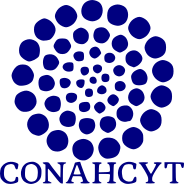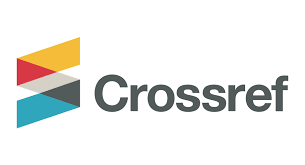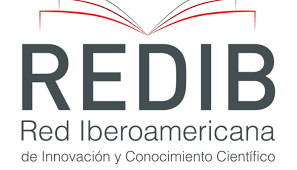Morfología polínica de Neomillspaughia y Podopterus (Polygonaceae: Eriogonoideae: Coccolobeae)
DOI:
https://doi.org/10.18387/polibotanica.53.7Palabras clave:
Keywords: Palynology, taxonomy, woody genera, Mesoamérica.Resumen
RESUMEN
Neomillspaughia y Podopterus son dos géneros de hábito arbóreo y arbustivo características que habitan en las selvas caducifolias de Mesoamérica. Ambos géneros son monofiléticos y han sido clasificados en la tribu Coccolobeae. Aunque cada uno cuenta con tres especies el número de estas empleadas en estudios filogenéticos moleculares es limitado de tal manera que sus relaciones filogenéticas en la tribu aún son inciertas. Estudios palinológicos en Eriogonoideae mencionan que el polen presenta poca variación, sin embargo, existe una organización diversa de los colpos, poros y ornamentaciones entre los géneros de esta subfamilia que son de interés taxonómico. Los objetivos de este estudio son caracterizar el polen de Neomillspaughia y Podopterus y explorar su valor taxonómico dentro de la subfamilia Eriogonoideae. La caracterización del polen se realizó mediante observaciones con microscopia óptica y electrónica de barrido de polen proveniente de ejemplares de herbario. Neomillspaughia se caracterizó por la presencia de granos prolato a subprolato y una ornamentación microrreticulada; solo N. hondurensis presentó una estructura vestibular en la apertura. En Podopterus, la forma del grano varía de subprolato a prolato esferoidal y la ornamentación de microrreticulada a reticulada. P. cordifolius presenta exina reticulada con lúmenes profundos y bien definidos; P. guatemalensis, presenta una estructura vestibular en la apertura y P. mexicanus exhibe granos tri-tetracolporados y aperturas lolongadas. La caracterización palinológica de las seis especies reveló que el número de colpos y los patrones de ornamentación de la exina son similares a los encontrados en otros géneros de la subfamilia Eriogonoideae por lo que su utilidad taxonómica es limitada. No obstante, la variación en la forma, número de colpos y aperturas, así como también en la ornamentación de la exina de los granos de polen permiten la certera identificación de las especies. En este trabajo se incluye descripciones y claves palinológicas de los géneros y las especies, así como también microfotografías de microscopio óptico y de barrido.
Referencias
Alfaro-Bates, R., González, J., Ortíz, J., Viera, F., Burgos, I., Martínez, E. y Ramírez, E. (2010). Caracterización palinológica de las mieles de la Península de Yucatán.: Universidad Autónoma de Yucatán, Comisión Nacional para el conocimiento y uso de la Biodiversidad. Mérida, Yucatán. https://www.biodiversidad.gob.mx/publicaciones/versiones_digitales/mieles.pdf
Ayodele, A. (2005). The morphology and taxonomic significance of pollen in the West-African Polygonaceae. Thaiszia Journal of Botany 15, 143-153. https://rcpol.org.br/wp-content/uploads/2016/03/9-Ayodele-2005-The-morphology-and-taxonomic-significance-of.pdf
Blake, S. (1921). Neomillspaughia, a new genus of Polygonaceae, with remarks on related genera. Bulletin of the Torrey Botanical Club 48(3), 77–88. https://doi.org/10.2307/2480362
Brandbvge, J. 1983. The genus Leptogonum (Polygonaceae). Nordic Journal of Botany 10(5), 487-492. https://doi.org/10.1111/j.1756-1051.1984.tb02007.x
Brandbvge. J. & Ølleaard. B. 1984. Inflorescence structure and generic delimitation of Triplaris and Ruprechtia (Polygonaceae). Nordic Journal of Botany. 4(6), 765-769. https://doi.org/10.1111/j.1756-1051.1984.tb02007.x
Brandbyge, J. (1990). The diversity of micromorphological features in the genus Coccoloba (Polygonaceae). Nordic Journal of Botany 10(1):25–44. https://doi.org/10.1111/j.1756-1051.1990.tb01749.x
Brandbyge, J. (1993). Polygonaceae. In: Kubitzki K., Rohwer J.G., Bittrich V (eds.). Flowering Plants: Dicotyledons. The families and genera of vascular plants, vol. 2. Springer, Berlin, Heidelberg. pp. 531-544 https://doi.org/10.1007/978-3-662-02899-5_63
Burke, J. M., Sánchez, A., Kron, K. A. y Luckow, M. (2010). Placing the woody tropical genera of Polygonaceae: A hypothesis of character evolution and phylogeny. American Journal of Botany 97(8), 1377-1390. DOI: https://doi.org/10.3732/ajb.1000022
Burke, J. M., y Sanchez, A. (2011). Revised subfamily classification for Polygonaceae, with a tribal classification for Eriogonoideae. Brittonia, 63(4), 510–520. DOI: https://doi.org/10.1007/s12228-011-9197-x
Burger, W. 1983, Polygonceae. In: W. Burger (ed.) Flora Costaricensis. Fieldiana Botany 13. Field Museum of natural History, Chicago. pp. 99-138. https://doi.org/10.5962/bhl.title.2593
Den Nijis, J., Hooghiemstra, H. and Schalk, P. (1980). Biosystematic studies of the Rumex acetosella complex (Polygonaceae). IV. Pollen morphology and the possibilities of identification of cytotypes in pollen analysis. Phyton 20(3-4), 307-323. https://www.zobodat.at/pdf/PHY_20_3_4_0307-0323.pdf
Erdtman, G. (1952). Pollen morphology and plant taxonomy: angiosperms (an introduction to Palinology). Stockholm. Sweden: Ed. Almqvist & Wiksell.
García, L., Rivero, M. y Droppelmann, F. (2015). Descripción morfológica y viabilidad del polen de Nothofagus nervosa (Nothofagaceae). Bosque 36(3):487–96.
https://scielo.conicyt.cl/pdf/bosque/v36n3/art15.pdf
Hernández-Ledesma, P., Berendsohn, W. G., Borsch T., Von Mering, S., Akhani, H., Arias, S., Castañeda-Noa, I., Eggli, U., Eriksson, R., Flores-Olvera, H., Fuentes-Bazán, S., Kadereit, G., Klak, C., Korotkova, N., Nyffeler, R., Ocampo, G., Ochoterena, H., Oxelman, B., Rabeler, R. K., Sanchez, A., Schlumpberger, B. O., Uotila, P. (2015). A taxonomic backbone for the global synthesis of species diversity in the angiosperm order Caryophyllales. Willdenowia, 45(3), 281-383. DOI: https://doi.org/10.3372/wi.45.45301
Hong, SP., Oh, IC., and Ronse De Craene, L. P. (2005). Pollen morphology of the genera Polygonum L. s. str. and Polygonella (Polygoneae: Polygonaceae). Plant Systematics and Evolution 254(1), 13-30. http://www.jstor.org/stable/23655154
Koenemann D.M. y J. Burke. (2020). A Molecular Phylogeny for the Genus Coccoloba (Polygonaceae) with an Assessment of Biogeographic Patterns. Systematic Botany 45(3), 567-575. https://doi.org/10.1600/036364420X15935294613536
Mondal, M. (1997). Pollen morphology and systematic relationship of the family Polygonaceae. Calcuta, India: Botanical Survey of India.
Nowicke, J. and Skvarla, J. (1977). Pollen morphology and the relationship of the Plumbaginaceae, Polygonaceae and Primulaceae to the order Centrospermae. Smithsonian contributions to botany no. 37. Washington, DC: Smithsonian Institution Press. https://repository.si.edu/bitstream/handle/10088/6995/scb-0037.pdf
Ortíz-Díaz, J. (1994). Polygonaceae. Etnoflora Yucatanense. Fascículo 10. Universidad Autónoma de Yucatán. Mérida, Yucatán, México
Ortíz-Díaz, J., Arnelas, I., Tun, J. and Flores, J. (2013). Neomillspaughia hondurensis (Polygonaceae), a new species from Central America. Phytotaxa 144 (1), 56-60. https://doi.org/10.11646/phytotaxa.144.2.3
Oswald, W., Doughthy, E., Ne’eman, G. and Ellison, A. (2011). Pollen morphology and its relationship to taxonomy of the genus Sarracenia (Sarraceniaceae). Rhodora 113(955), 235-251. https://doi.org/10.3119/0035-4902-113.955.235
Punt, W., Hoen, P., Blackmore, S., Nilsson, S. and Le, A. (2007). Glossary of pollen and spore terminology. Review of Paleoborany and Palynology 143(1-2), 1-81. https://doi.org/10.1016/j.revpalbo.2006.06.008
Reeder, S., Lee., B., Fox, R. and Dobritsa, A. (2016). A ploidy-sensitive mechanism regulates aperture formation on the Arabidopsis pollen surface and guides localization of the aperture factor INP1. PlOS Genet 12(5): e 1006060. https://doi.org/10.1371/journal.pgen.1006060
Russell, A. (2003). Phylogenetic analysis and morphological study of the subfamily Eriogonoideae (Polygonaceae) with emphasis on the genus Chorizanthe. MS thesis. San Diego, California: San Diego State University.
Sáenz Laín, C. (2004) Glosario de términos palinológicos. Lazaroa 25, 93-112. https://dialnet.unirioja.es/servlet/articulo?codigo=1123656
Sánchez-Dzib, Y., Sosa-Nájera, S. y Lozano-García, M. (2009). Morfología polínica de especies de la selva mediana subperennifolia en la cuenca del río Candelaria, Campeche.” Boletin de La Sociedad Botánica de México 84, 83–104. https://doi.org/10.17129/botsci.2296
Sawyer, R. (1988). Honey Identification. Cardiff, UK: Cardiff Academic Press.
Schneider, C., Rasband, W., and Eliceiri, K. (2012). NIH Image to ImageJ: 25 years of image analysis. Nature methods 9(7), 671-675. https://doi.org/10.1038/nmeth.2089
Standley, P. and Steyermark, J. (1946). Flora of Guatemala-Part IV. Fieldiana, Bot. 24(4): 104–137. https://www.biodiversitylibrary.org/item/19662#page/11/mode/1up
Wang, R. and Dobritsa, A. (2018). Exine and aperture patterns on the pollen surface: their formation and roles in plant reproduction. Annual Plant Reviews 1(2), 1–40. https://doi.org/10.1002/9781119312994.apr0625
Wodehouse, R. (1931). Pollen grains in the identification and classification of plants. VI. Polygonaceae. American Journal of Botany 18(9), 749-764. https://doi.org/10.2307/2435790
Yurtseva, O., Severova, E. and Bovina, I. (2014). Pollen mrphology and taxonomy of Atraphaxis (Polygoneae, Polygonaceae). Plant Systematics and Evolution 300(4), 749-766. http://www.jstor.org/stable/43496811
Publicado
Número
Sección
Licencia

Polibotánica por Departamento de Botánica de la Escuela Nacional de Ciencias Biológicas del Instituto Politécnico Nacional se distribuye bajo una Licencia Creative Commons Atribución-NoComercial-CompartirIgual 4.0 Internacional.




















